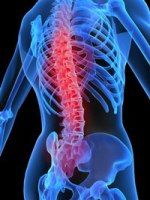Researchers Discover Gene Believed Responsible for Age-Related Macular Degeneration
Researchers from Boston University School of medicine (BUSM), University of Texas Southwestern Medical Center at Dallas (UT Southwestern), and SEQUENOM, Inc. report the discovery of a genetic variation that is the strongest known risk factor associated for age-related macular degeneration (AMD).
"Considering that AMD is such a common and complex condition with multiple risk factors, we did not expect that we would identify a gene that is responsible for almost half of the cases," said author Lindsay A. Farrer, PhD, chief of the genetics program at BUSM, and a professor of medicine, neurology, genetics and genomics, epidemiology and biostatistics at BUSM.
The biological basis of this disorder, which is the most common cause of blindness in the elderly, is unclear. However, it was strongly suspected that genetics did play a role. The researchers tested single nucleotide polymorphisms (SNPs) for association of AMD in a region of 14 million base pairs on chromosome 1q25-31 where a gene for AMD had been previously localized in families with multiple persons affected with AMD. Using two independent case-control populations, the researchers found that possession of at least one copy of histidine at position 402 of complement factor H (CFH) increased the risk of AMD almost three-fold.
"We are pleased to be part of this important collaboration with BU School of Medicine and UT Southwestern and that the use of our MassARRAY(R) System in this large-scale association study helped contribute to the discovery of the genetic variations associated with AMD," stated Charles Cantor, Ph.D. SEQUENOM's Chief Scientific Officer. "We recognize that the identified genetic targets may be suitable for molecular diagnostic purposes."
Original Publication: "Complement Factor H Polymorphism and Age-Related Macular Degeneration"; Science online 2005.
Most read news
Topics
Organizations
Other news from the department science

Get the analytics and lab tech industry in your inbox
By submitting this form you agree that LUMITOS AG will send you the newsletter(s) selected above by email. Your data will not be passed on to third parties. Your data will be stored and processed in accordance with our data protection regulations. LUMITOS may contact you by email for the purpose of advertising or market and opinion surveys. You can revoke your consent at any time without giving reasons to LUMITOS AG, Ernst-Augustin-Str. 2, 12489 Berlin, Germany or by e-mail at revoke@lumitos.com with effect for the future. In addition, each email contains a link to unsubscribe from the corresponding newsletter.

























































